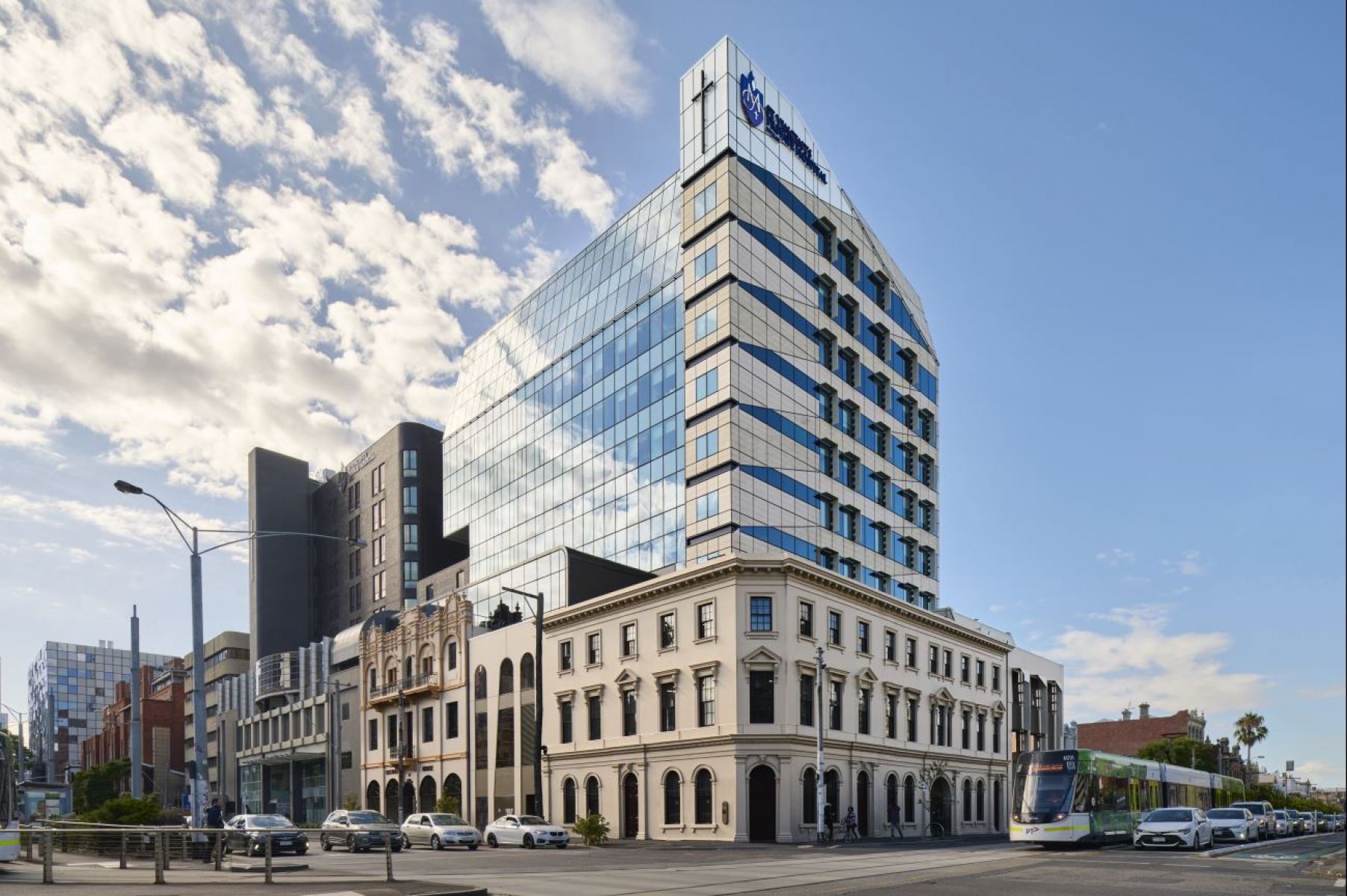St Vincent’s Health Australia has been exploring electrification options at St Vincent’s Private Hospital Fitzroy, a large private healthcare facility in inner Melbourne providing vital services to thousands of patients each year.
As part of the Victorian Government’s Large Energy User Electrification Support program, the hospital explored how replacing its outdated gas boilers with electric powered heat pumps could deliver significant cost savings and emissions reductions, particularly following a recent 10-story east wing expansion.
The Large Energy User Electrification Support program is a $1.6 million initiative that helps Victorian commercial and industrial gas users identify ways to electrify their operations and reduce energy use, costs and emissions.
Using a $49,000 grant provided through the program, St Vincent’s undertook a feasibility study that identified 3 potential electrification options:
- Replacing gas boilers with a polyvalent heat pump system that generates both hot and cold water;
- Installing a low-temperature heat pump to supplement the new east wing’s condensing boilers; and,
- Replacing steam heat exchangers with a CO₂ heat pump for domestic hot water.
The hospital operates under a contracted gas supply agreement that includes a maximum daily consumption quota, meaning additional charges can apply for overuse.
Currently, around 75% of the site’s energy is used to heat hot water with gas.
By electrifying its systems, St Vincent’s can reduce its reliance on gas and should gas prices rise, achieve a payback period as low as 2.5 years.
These upgrades will support St Vincent’s in reaching its climate targets of 50% carbon emission reduction by 2030.
Installing the polyvalent heat pump system for hot water, along with the CO₂ heat pump for domestic hot water, offers a quick payback period of 4 to 6 years and could save St Vincent’s Private Hospital Fitzroy:
- $201,837 in annual energy costs
- 17,817 GJ reduction in gas usage
- resulting in a 68% reduction in the site’s gas usage
- if opted into, the VEU program could provide upgrades potentially worth $598,500 in financial incentives.

Building Victoria’s renewable energy future
The Large Energy User Electrification Support program forms part of the Victorian Energy Upgrades (VEU) program, the flagship program helping Victorians upgrade their homes and businesses with energy-efficient products and services by offering discounts and rebates.
St Vincent’s was 1 of 36 facilities to take part in the program. Grants of up to $60,000 per facility were available to support innovative electrification feasibility assessments for commercial and industrial businesses that use between 10 to 100 terajoules of gas per annum.
Some businesses, including St Vincent’s, are exempt from the VEU program as they’re Scheduled Activity Premises – large facilities which were part of previous government energy efficiency programs. To benefit from the incentives identified in their feasibility assessment, St Vincent’s would need to waive their exemption and opt into the VEU program.
These feasibility assessments helped build a business case for bespoke energy efficiency upgrades through the VEU program’s Project Based Activity (PBA) method, such as upgrading hot water boilers, furnaces, ovens and dryers, by tailoring the best way forward to transition from gas to electricity.
When homes and businesses reduce their energy use through the VEU program, accredited providers generate Victorian Energy Efficiency Certificates (VEECs). Each certificate represents 1 tonne of greenhouse gas prevented from entering our atmosphere.
If St Vincent’s opt into the VEU program and the study recommendations are pursued, the installation of industrial-sized heat pumps heat pump could generate 6,650 VEECs.
Approved businesses create certificates for every upgrade they perform.
Energy retailers are required to purchase certificates each year corresponding to their share of energy they sell and to meet annual emissions targets set by the Victorian Government.
Energy savings achieved in the program benefit all energy consumers as they reduce the need for upgrades to energy infrastructure.
Page last updated: 03/07/25
